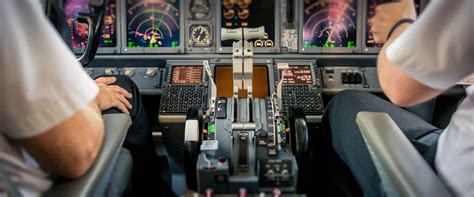Instrument Rating: How to Make the Most of Your Training Time
Obtaining an instrument rating (IR) is a significant achievement for any pilot, opening up a world of flight possibilities regardless of weather conditions. However, IR training can be demanding and expensive. Maximizing your training time is crucial for efficiency and success. This guide provides strategies to make the most of your investment, ensuring a smooth and effective path to your instrument rating.
What is an Instrument Rating?
Before diving into training optimization, let's briefly define an instrument rating. An instrument rating allows pilots to fly under instrument meteorological conditions (IMC), meaning in weather where visibility is significantly reduced and reliance on instruments is paramount. This expands flight opportunities dramatically, allowing pilots to operate safely and confidently in challenging weather.
How to Prepare Before Your First Lesson
Preparation is key to maximizing your training time. Don't underestimate the importance of ground school before even sitting in the cockpit.
- Study the Fundamentals: Familiarize yourself with basic meteorology, navigation principles, and instrument interpretation. Many online resources and textbooks can help you establish a solid foundation.
- Understand the Airplane's Systems: Know your aircraft's instruments, their functions, and potential malfunctions. Spending time pre-flighting the aircraft before each lesson will significantly speed up the learning process.
- Practice Using Flight Simulators: While not a replacement for real-world flight training, flight simulators can help you become familiar with instrument procedures in a lower-pressure environment.
Mastering the Fundamentals: What Are the Key Areas to Focus On?
Effective IR training hinges on mastering key areas. Focusing your efforts strategically will accelerate your progress.
Understanding and Interpreting Flight Instruments:
This is the cornerstone of instrument flying. Practice reading and interpreting altimeters, airspeed indicators, vertical speed indicators, headings, and attitude indicators fluently. Understanding their individual and combined indications is essential for safe flight.
Developing Proficiency in Instrument Procedures:
Standard instrument departures (SIDs), approaches (STARs), and missed approaches are crucial elements of instrument flying. Practice these procedures diligently, focusing on precision and adherence to established guidelines.
Mastering Navigation Techniques:
Accurate navigation is vital in IMC. Practice using VORs, GPS, and other navigational aids to determine your position and maintain your flight path.
Developing Situational Awareness:
Maintaining situational awareness is paramount in instrument flight. Practice regularly monitoring your instruments, anticipating changes in conditions, and promptly responding to any deviations from the planned flight path.
H2: How Can I Improve My Situational Awareness During Instrument Flight Training?
Improving situational awareness during instrument flight training involves several key strategies:
- Regular Instrument Cross-Checking: Consistently cross-check all your instruments, ensuring you understand the relationships between their indications. This prevents single-instrument fixation.
- Planning Ahead: Anticipate changes in heading, altitude, and airspeed. Prepare for upcoming procedures and maneuvers in advance to maintain a smooth and controlled flight.
- Utilizing Checklists: Use checklists rigorously to ensure you've completed all necessary steps in each phase of flight. This prevents errors and promotes a systematic approach.
- Communicating Effectively: Maintain clear communication with Air Traffic Control (ATC), accurately reporting your position, intentions, and any unusual situations.
H2: What are some effective ways to manage stress and maintain focus during instrument training?
Instrument flying can be stressful. Effective stress management techniques are crucial.
- Adequate Rest: Ensure you're well-rested before each flight lesson. Fatigue can severely impair performance and decision-making.
- Proper Nutrition: Maintain a healthy diet to provide sustained energy and focus.
- Mental Preparation: Practice relaxation techniques like deep breathing or mindfulness to calm nerves before and during flight.
- Positive Self-Talk: Maintain a positive attitude and focus on your progress.
H2: What are some common mistakes to avoid during instrument training?
Avoiding common mistakes can significantly improve your efficiency.
- Rushing: Avoid rushing through procedures. Take your time, focus on precision, and ensure you understand each step.
- Ignoring Checklists: Failing to use checklists properly is a major source of errors. Use them consistently.
- Poor Communication: Ensure clear and concise communication with ATC.
- Ignoring Warnings: Promptly address any warnings or deviations from the flight plan.
Conclusion: Making the Most of Your Instrument Rating Training
Obtaining your instrument rating requires dedication and effective training. By preparing thoroughly, focusing on key areas, practicing consistently, and maintaining a positive attitude, you can significantly improve the efficiency and effectiveness of your training. Remember, consistent effort and attention to detail are the keys to success in instrument flight training. Good luck and happy flying!

